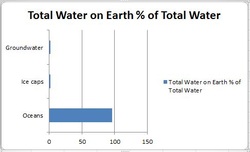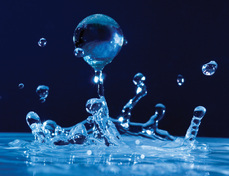As a costal resident, I think plastic should be labeled as toxic because the plastic that is dumped into the ocean washes up at the beach. Not only that, sometimes I see dead wild-life floating on the surface because the toxins from the plastic killed them. Something needs to be done about this issue, if wild-life can die from toxic plastics, why can't humans die from it too? If this problem gets worse, people will accidently inhale the disslo
Three characteristics of the ocean are the oceans are 1/4000 of the Earth's mass, 1/8000 of the Earth's volume and 97% of the Earth's water is salt water. The three features of the ocean floor are trenches, Mid-Ocean ridge and Abyssal Planes. The three types of sediment are biogenic, lithogenic, and hydrogenic. The chemical composition of the ocean is 30.6% sodium, 7.7% magnesium, 3.7% sulfate, 1.2% calcium, 1.1% Potassium, 55% Chlorine and 0.7% other. The two different zones of the ocean are Pelagic and Benthic. The ocean's resources include food like fish, shellfish and seaweed. They also include electricity and transportation. There are two types of ocean currents, surface and deep currents. Wind, gravity and refraction are factors that cause ocean waves.
The Ganges River starts in northern India and flows into the India Ocean. One enviormental problem the Ganges faces today is pollution, every year the pollution goes up twenty percent in the river. The local government is not doing anything about and there are very few local organizations attempting to clean the river. The building of the Frakka bridge displaced the water in the Ganges River, creating a water dispute between India and Bangeldesh (east pakistan). The two countries singned a treaty saying if the river's water level falls below a certain measurement, each country gets half of the water supply. This affects the river because when they built the bridge, they may have accidently killed the local animals that lived in the river or changed the flow of one part of the river. Many cities on the west and east sides depend on the Ganges for transportation and religous purposes. The river allows cities on different sides of the river communicate.

Most of Earth's water is salt water, which is an unusable water source for living things. 97% of Earth's water is salt water, and the other 3% is freshwater. But only about 1% of freshwater is currently avilable to humans. Water conservation is important because all the water we have is all that is on Earth. If we use it all up, we have no water left to live off of. Also, even though water is recycled in the water cycle, if there is no water to ecv

Some natural resources that are important to me are water and wind. Water is mainly used for drinking and bathing but can also be used for electrical power. Electrical power is a key factor in our daily lives, without it we lose our means of transportation and communication. Not only is it a power source it is also a source of life. Life needs water to survive.


 RSS Feed
RSS Feed